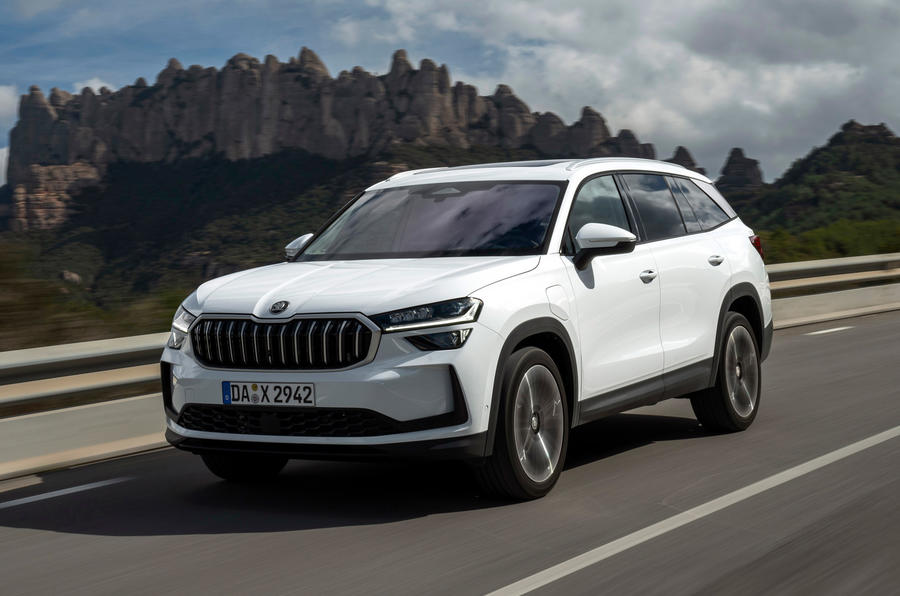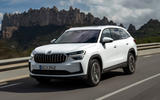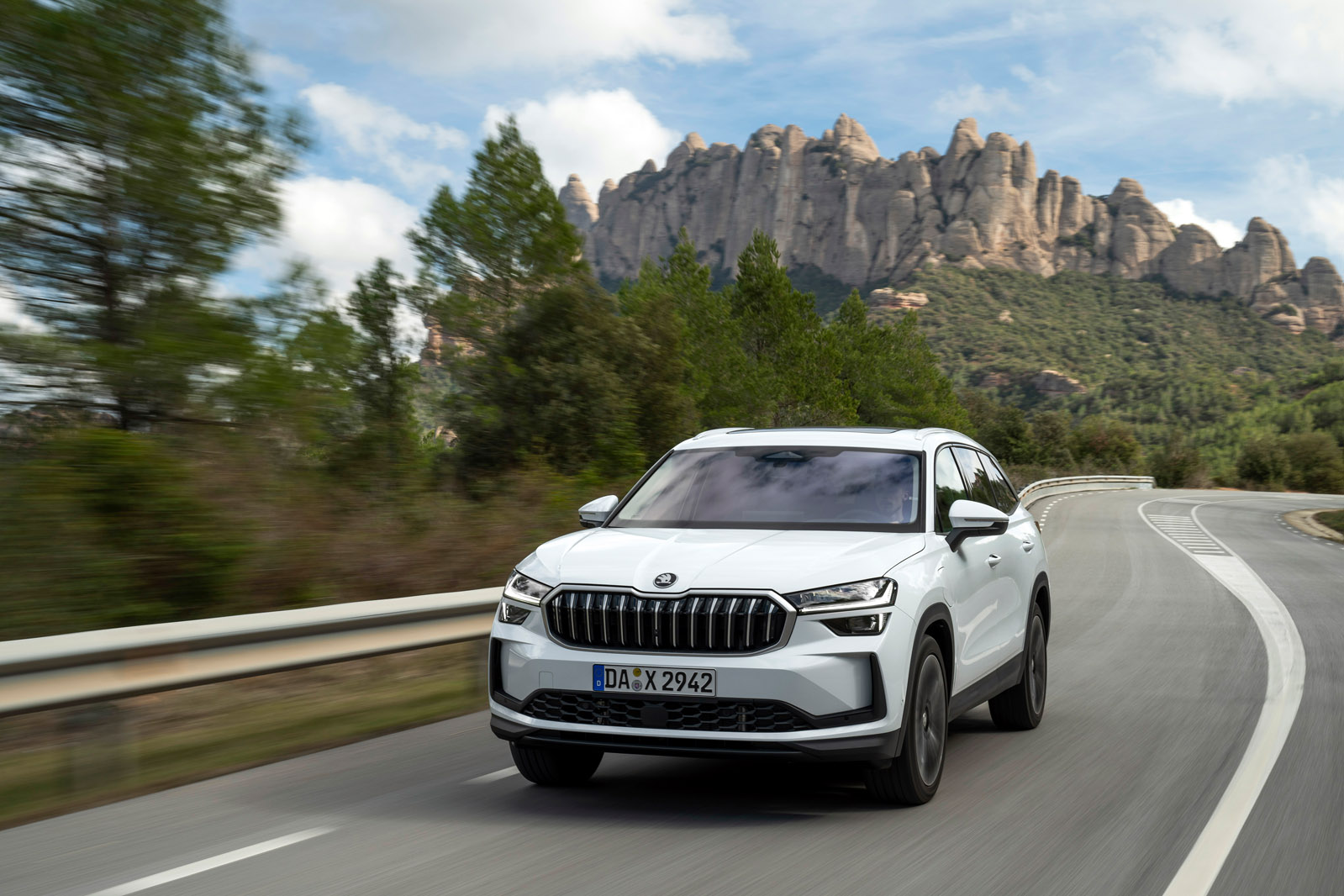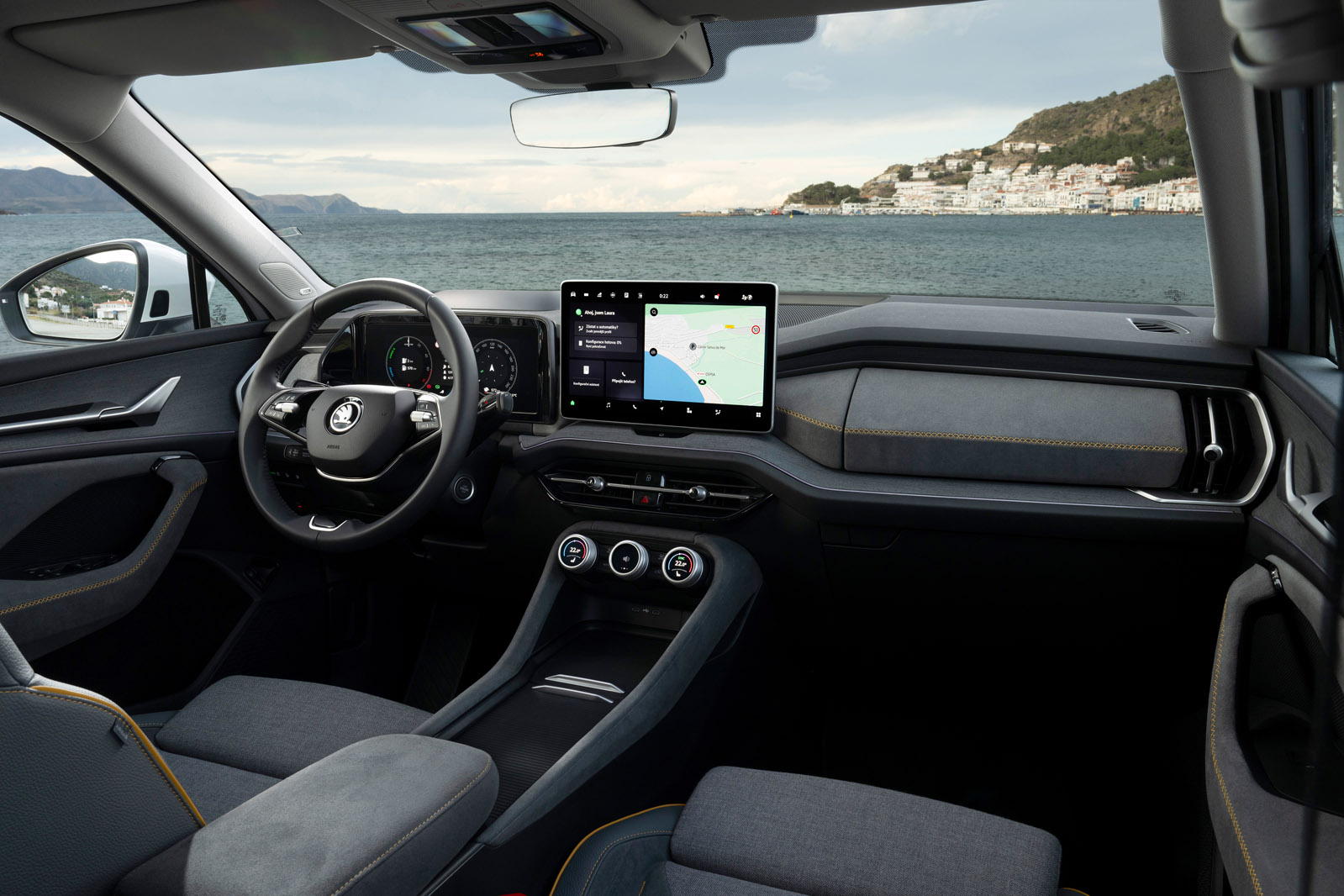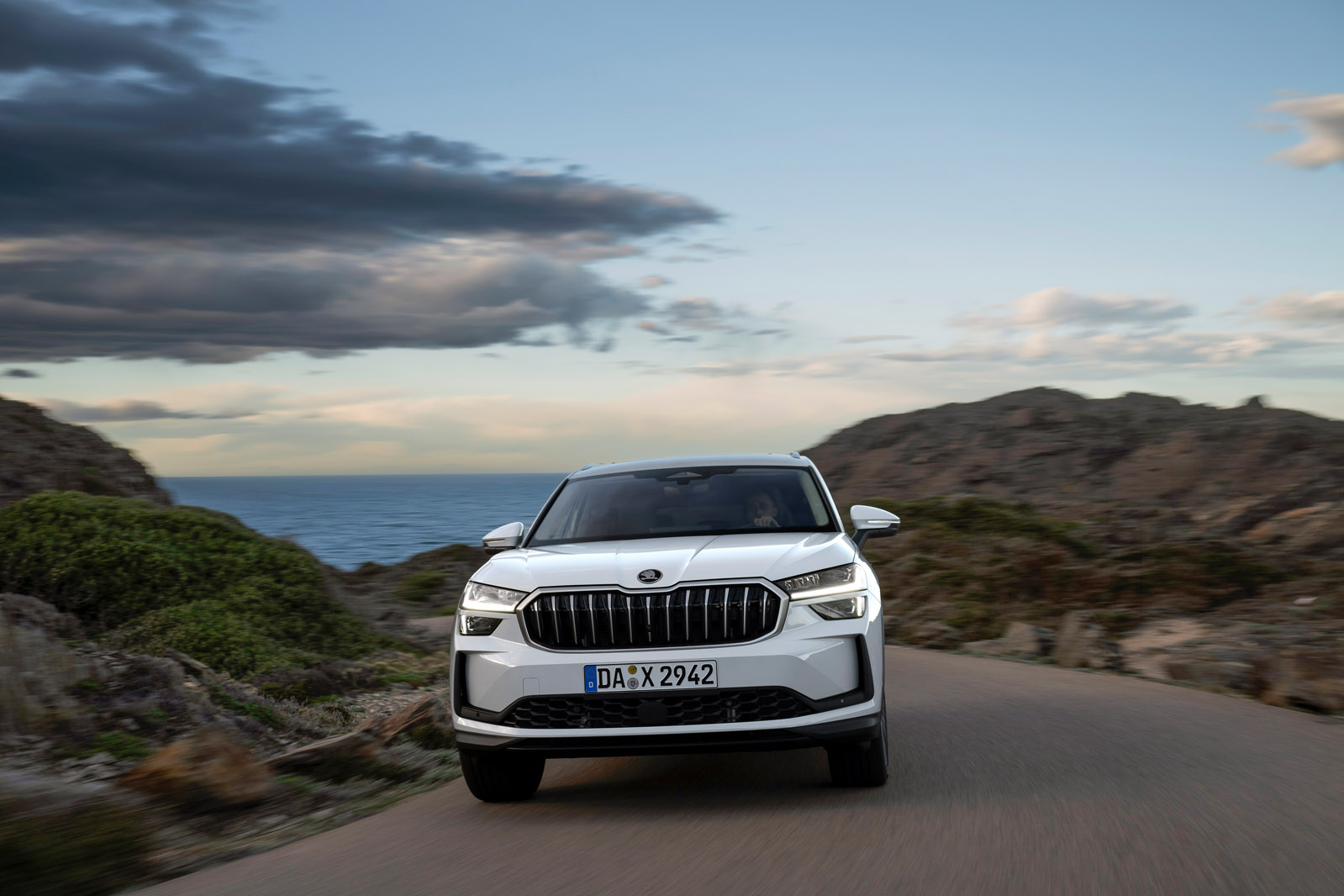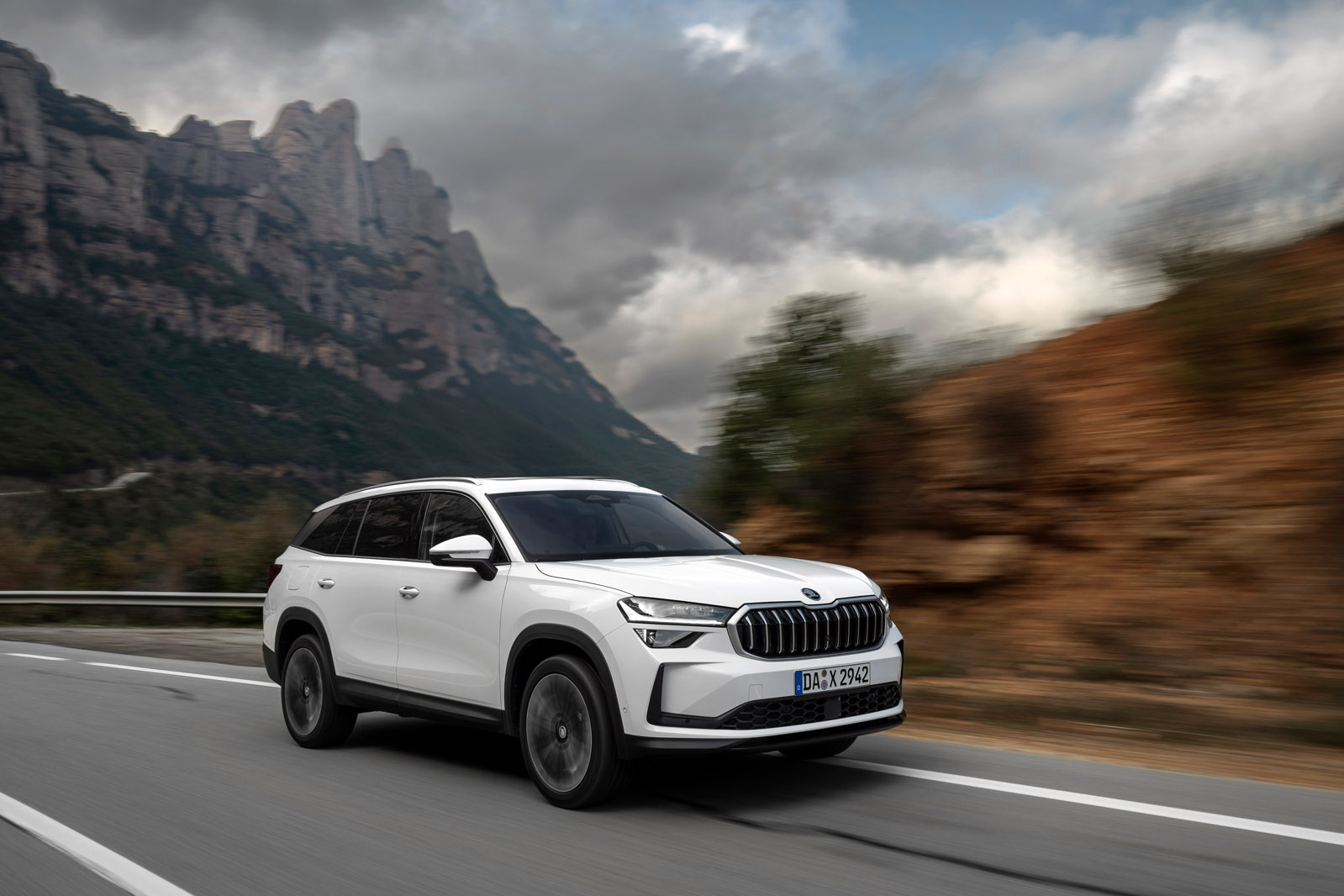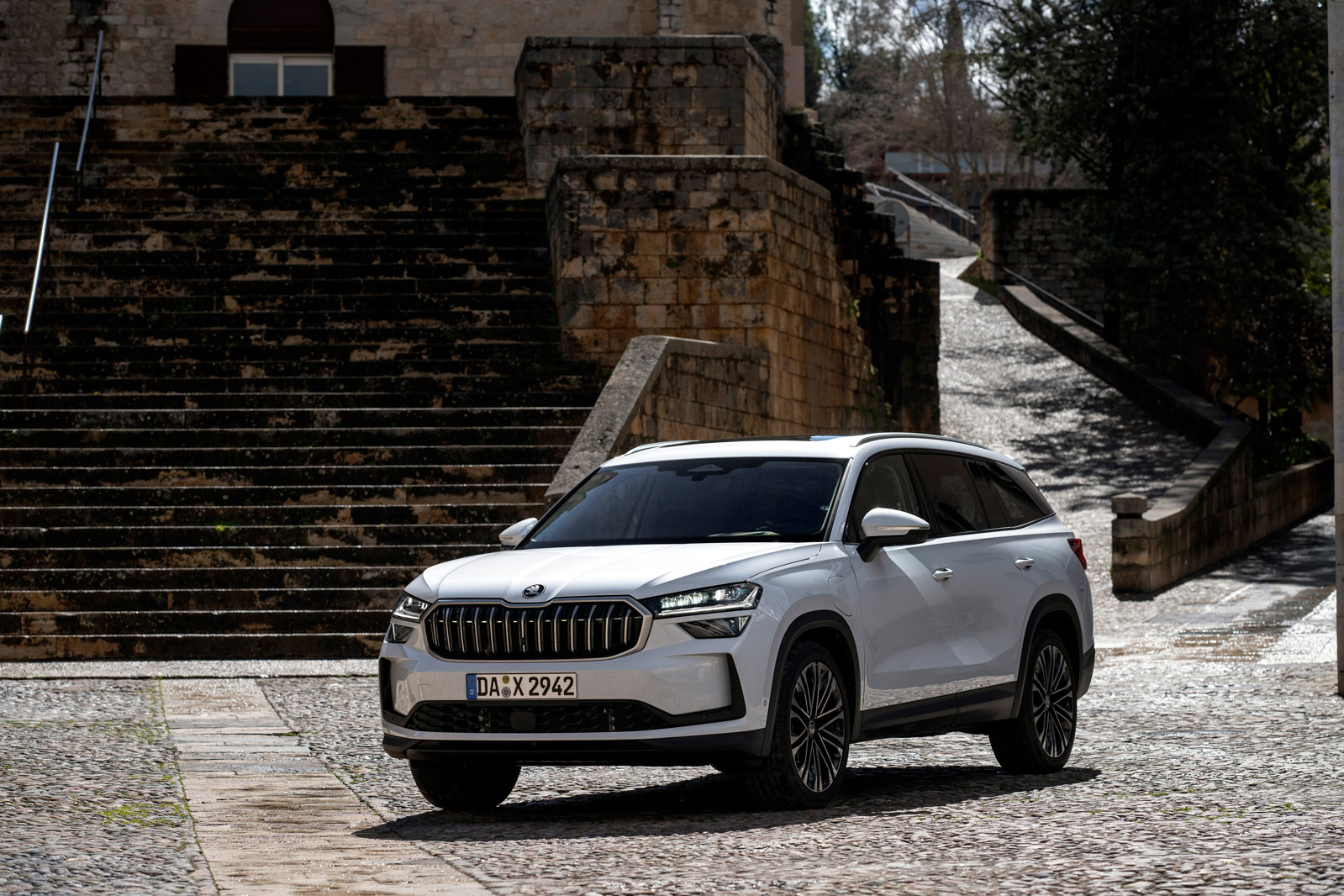A large, seven-seat SUV is all about the interior, you might argue, given the genre has effectively replaced MPVs. And Skoda seems to have taken that to heart, because inside, the Kodiaq is a bit of a triumph.
Practical matters first: the old car was spacious, and an additional 63mm of length makes this one even more palatial. With the rear seat in its standard position, you can stretch out, almost like in a Mercedes S-Class.
The third row (which is standard on most Kodiaqs in the UK) is tighter, of course, but by sliding the second row forwards, you can just about cram in seven adults. None of them will be too happy about it, but it’s better than walking.
A usable amount of boot space remains even with all the seats up, too. The five-seater boasts 910 litres.
You can’t have a seven-seat PHEV, because the third row seats and the battery occupy the same space. Skoda’s engineers say they did consider one, but they would have had to compromise the battery size and the fuel tank. Indeed, the Kia Sorento PHEV, which does have seven seats, offers less than half the Kodiaq’s EV range.
The real revolution is in the general design and ambience. As with the Skoda Enyaq electric SUV, you choose a trim and then one of four ‘design selections’ that match all the interior materials. Some work better than others, but the one with the grey faux leather and wool and wood inserts felt a cut above some of the symphonies in plastic being churned out by the ‘premium’ car makers.
The user interface also gives you the sense that the engineers put some real though into how you might want to use a car. On the road. While driving. Figure that. The overall button count has been reduced, sure, but once you’ve set up some shortcuts, the latest generation of Skoda’s multimedia system puts important functions just a single press away. Unlike previous iterations, it also responds instantly.
The new ‘smart dials’ that made their debut in the Superb help too. There are two dials that control the temperature and heated seats and one to which you can map up to four functions, like zooming the map and changing the fan speed and driving mode. Once you get used to it, it works remarkably well, and without overloading the dashboard with buttons.





